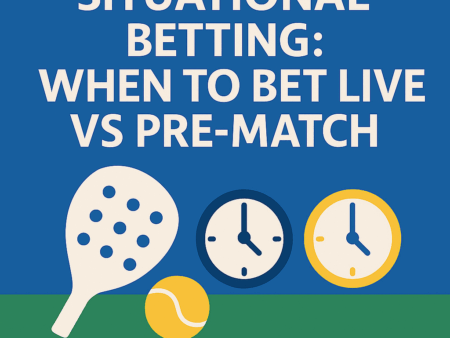
Analysing a padel match properly is one of the most powerful skills for players, coaches, and bettors. The best analysts break matches down into objective, structured components instead of focusing only on highlights or final scores.
This step-by-step framework shows you exactly how to evaluate any padel match like a professional — before, during, and after play.
🟦 Step 1 — Identify Playing Styles
Every padel team consists of two complementary roles:
✔ Left-side attacker
✔ Right-side playmaker/defender
Analyse:
• Attacking patterns
• Preferred shots
• Defensive habits
• Net behaviour
Common styles:
- Aggressive power duo
- Defensive lob-based duo
- Mixed: attacker + strategist
Understanding styles predicts matchup dynamics.
🟩 Step 2 — Evaluate Current Form
Look beyond match results. Focus on:
✔ Last 10 matches
✔ Opponent difficulty
✔ Consistency under pressure
✔ Indoor vs outdoor form
✔ Recent confidence indicators
A team that is 7–3 against strong opponents may be in better form than an 8–2 team with weak opposition.
🟨 Step 3 — Analyse Tactical Matchup
This is where most matches are decided.
Ask:
✔ Who wins the net more often?
✔ Whose lobs are more effective?
✔ Which pair handles the glass better?
✔ Which team has better transition play?
Look for “style advantage.”
- Lob-heavy teams beat smashers on slow courts.
- Power teams beat passive defenders indoors.
🟥 Step 4 — Evaluate Court Speed
Court speed changes EVERYTHING.
Fast Court Favors:
✔ Power attackers
✔ Shorter rallies
✔ Favourites
Slow Court Favors:
✔ Defensive teams
✔ Long rallies
✔ Underdogs
Always identify court speed before analysis.
🟦 Step 5 — Consider Weather Conditions (Outdoor Matches)
Weather affects:
✔ Bounce height
✔ Smash effectiveness
✔ Lob accuracy
✔ Player movement
Wind = most important factor.
- Helps defenders
- Hurts aggressive players
🟧 Step 6 — Study Partnership Chemistry
Strong duos:
✔ Communicate constantly
✔ Rotate efficiently
✔ Recover from pressure quickly
Weak duos:
❌ Blame each other
❌ Lose composure in Golden Points
❌ Have poor defensive spacing
Chemistry often decides tight matches.
🟫 Step 7 — Analyse Key Match Statistics
Focus on high-impact stats:
✔ Break point conversion
✔ Golden Points won
✔ Net points won
✔ Unforced errors
✔ Long rally success
These statistics predict momentum and match outcomes far better than total points.
🟥 Step 8 — Identify Momentum Shifts
Momentum indicators:
✔ Who controls the net?
✔ Who wins key rallies?
✔ Who reacts better after Golden Points?
✔ Who shows stronger body language?
Momentum is one of the strongest predictors of future points.
🟦 Step 9 — Analyse Set Patterns
Many padel matches follow similar patterns:
• Slow start → dominant finish
• 1st-set underdog → 2nd-set favourite
• Strong teams adjust strategy mid-match
Look at how teams adapt:
✔ Do they change positioning?
✔ Do they vary speed?
✔ Are lobs getting higher/deeper?
Adaptability wins matches.
🟩 Step 10 — Post-Match Review (Most Valuable Step)
After every match, record:
✔ What worked?
✔ What failed?
✔ Which matchup decided the outcome?
✔ Were conditions a major factor?
✔ Did momentum or psychology matter?
This builds a long-term analytical database.
🟦 Quick Match Analysis Checklist
✔ Style matchup
✔ Form (last 10)
✔ Court speed
✔ Weather impact
✔ Chemistry level
✔ Net dominance
✔ Golden Points
✔ Momentum flow
If you analyse all 8 factors → your predictions become highly accurate.
🟩 Summary
Proper match analysis requires:
- Understanding playing styles
- Evaluating real form (not rankings)
- Reading tactical matchups
- Factoring court & weather speed
- Studying partnership chemistry
- Tracking stats & momentum
This structured approach turns match analysis into a repeatable, professional process.
Next: Page 8 — Situational Betting: When to Bet Live vs Pre-Match.


